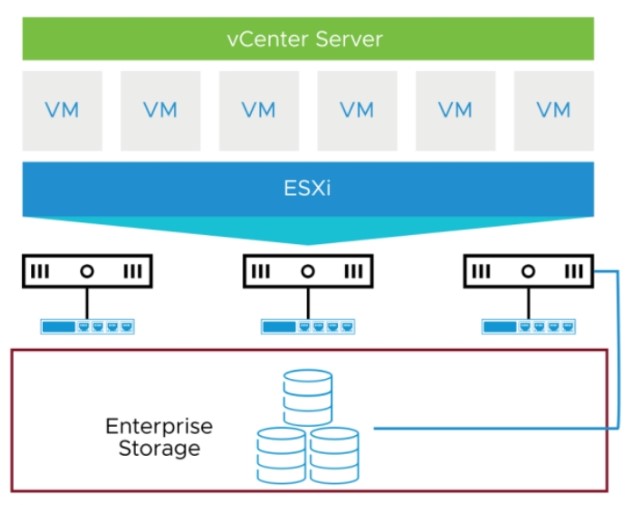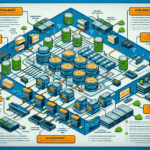Storage Path Redundancy Considerations:
Multipathing provides both availability and load balancing for performance.
Consider these guidelines when designing multipathing:
• Always configure storage multipathing.
• For availability, use a minimum of two active paths to a LUN:
— Four paths are better because this configuration accommodates more types of failures.
• Configure paths using two HBAs or NICs, two switches, and two array storage processors:
— If using HBAs, use two single-port storage HBAs rather than a single dual-port storage HBA.
• Do not change the path policy that the system sets unless the implications of the change are recommended by the storage vendor.
• Use vendor recommendations for third-party multipathing plug-ins.
Providing redundancy in the storage design is essential to increase availability, scalability, and performance. Configure the following components for storage redundancy:
• Storage network components
• Storage paths
• Storage processors
• LUN configurations (RAID)
Configure a minimum of four paths to a LUN. With all paths correctly configured, the failure of an HBA, switch, or array storage processor does not prevent access to data.
Always consult array documentation for specific multipathing policy support. However, in general, configure multipathing policies as follows:
• Most Recently Used (MRU) for active-passive arrays to avoid path thrashing
• Fixed or round robin as an option for active-active arrays
• MRU or round robin as an option for ALUA arrays
• MRU for virtual port storage arrays
Source: "VMware vSphere: Design, Lecture Manual, ESXi 7 and vCenter Server 7"

Ali YAZICI is a Senior IT Infrastructure Manager with 15+ years of enterprise experience. While a recognized expert in datacenter architecture, multi-cloud environments, storage, and advanced data protection and Commvault automation , his current focus is on next-generation datacenter technologies, including NVIDIA GPU architecture, high-performance server virtualization, and implementing AI-driven tools. He shares his practical, hands-on experience and combination of his personal field notes and “Expert-Driven AI.” he use AI tools as an assistant to structure drafts, which he then heavily edit, fact-check, and infuse with my own practical experience, original screenshots , and “in-the-trenches” insights that only a human expert can provide.
If you found this content valuable, [support this ad-free work with a coffee]. Connect with him on [LinkedIn].






